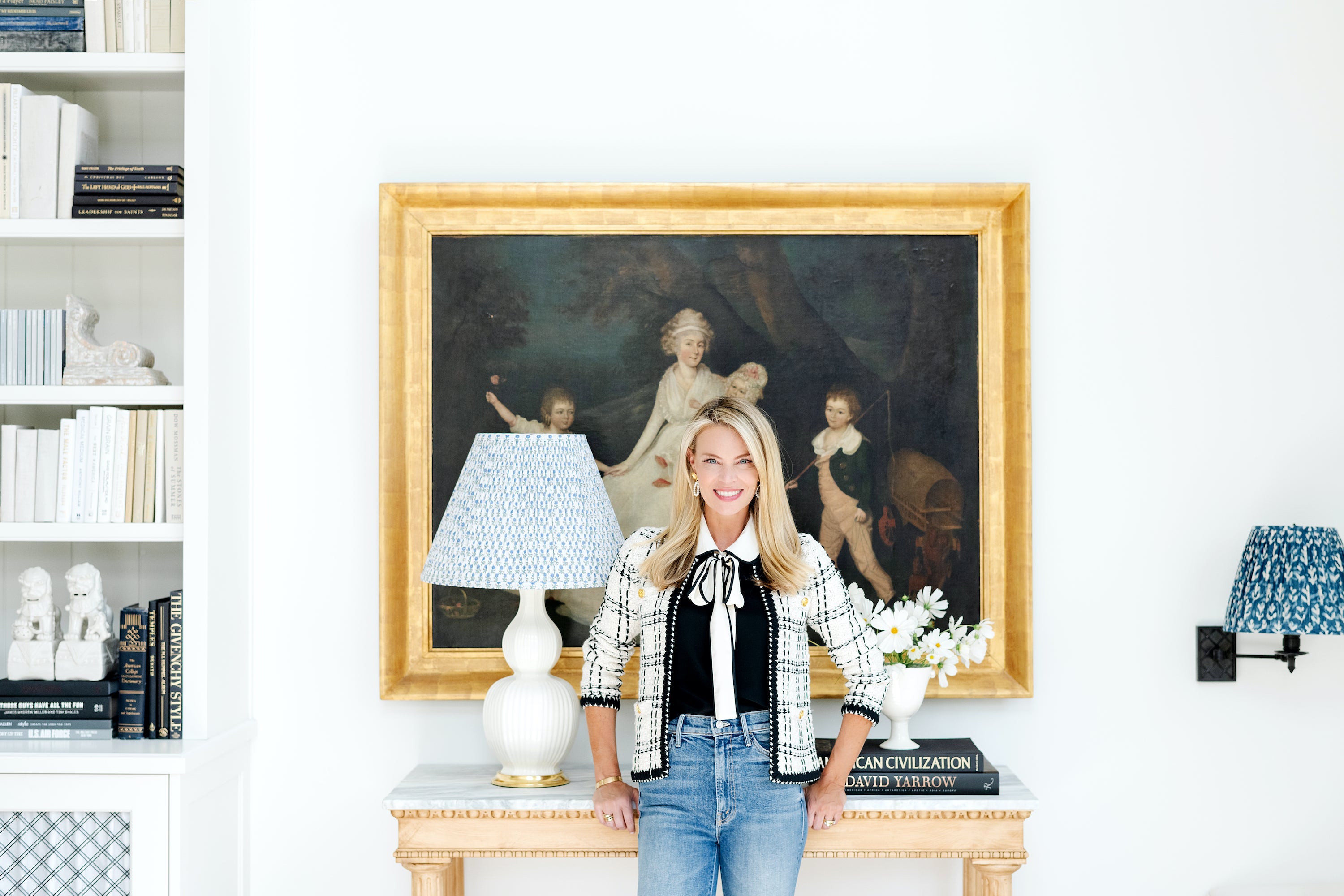The 50 States Project is a yearlong series of candid conversations with interior designers, state by state, about how they’ve built their businesses. Today, we’re chatting with Utah designer Hillary Taylor about why she has her team sign NDAs, the two books she gives to clients and the project she most regrets not photographing.
What was your path to starting your firm?
My mother was a designer when I was growing up—she would take me to the showrooms in San Francisco between violin lessons—but in my family, design wasn’t considered something you would study. Because my parents paid for my education, it just wasn’t on the list of things that I was going to do. It wasn’t what my parents’ friends were doing, and it wasn’t considered intellectual enough.
Even though your mom did it?
Yes! Instead, I worked in San Francisco for a few years after college, then moved to Utah to go to law school. I’d always wanted to go to law school—it wasn’t like I had always wanted to be a securities attorney, but I really did like what the securities attorneys were doing versus the investment banking side of transactions, so I felt like it was a great fit. I worked for a securities firm for about a year after law school, while also trying to juggle a new baby.
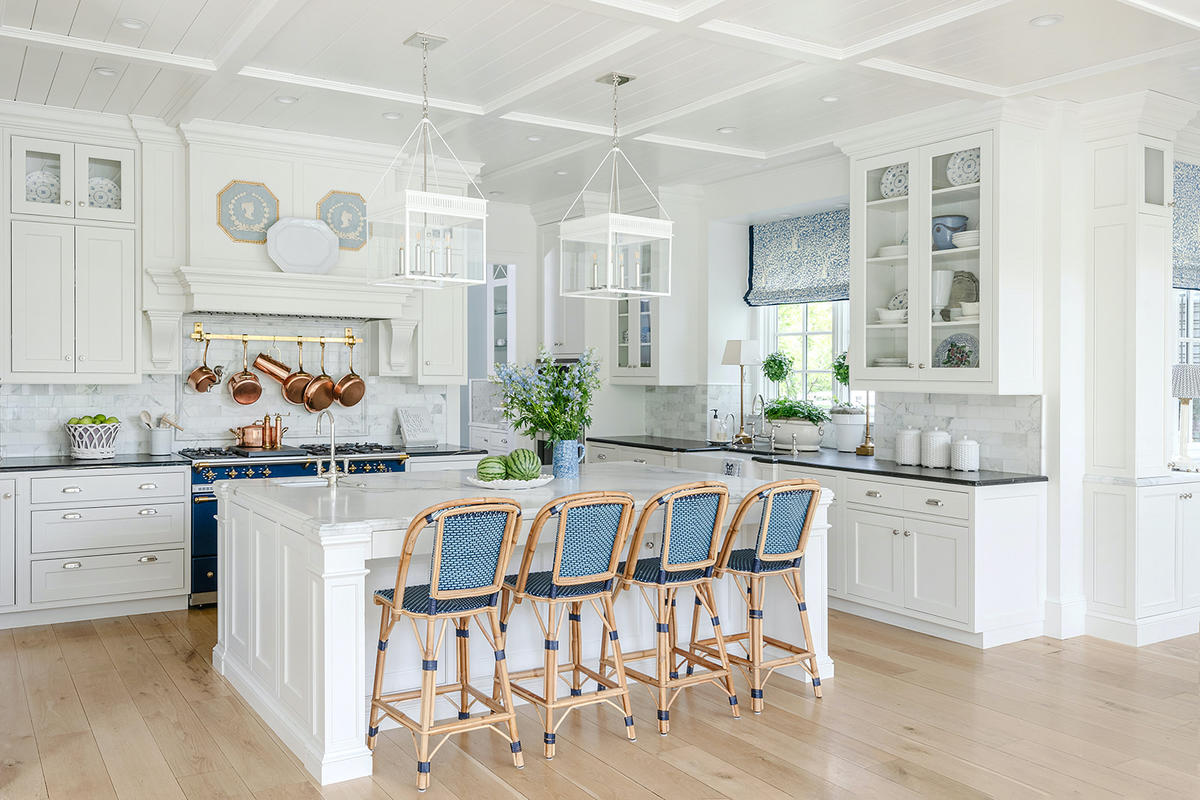
What helped you realize you needed to make a change?
I was pregnant with my second child when my parents got divorced—and I rethought everything. My husband had bought me a little sewing machine that I’d been sewing on for years—it was my therapy—and [as all of this was happening], he said, “I think you need a legit sewing machine.” So I got one of those Juki industrial machines and I just went to town.
My mom helped me set up the business. She [saw my sewing and] said, “I think this is what you want to do.” It’s so unfortunate that when you’re not in the creative world, you judge it as a totally right-brained, emotional thing. But my business is 80 percent left-brain—coming up with a game plan is creative by nature, but in order to execute on it, you have to have that rational and analytical side. I was raised in the Bay Area, where everyone was doing startups. Spreadsheets and engineering and technology were so important to the world I grew up in, but all the beauty you need to experience daily—that should be [among] those pursuits, as well. It is sometimes forgotten. Now, I’m so proud to be an interior designer. My father is still like, “You do what?” But I’m totally fine with that.
What was the leap from that moment with your mom to incorporating your business?
In some ways you can’t tell people or ask people for help before you know what it takes for them to help you. But it started with friends who said, “Can you make me balloon shades?” One of my first jobs was helping an old roommate who was building a little spec house in Austin, Texas, when she was just choosing finishes. She said, “But you could do the window treatments, can’t you?” And I said, “Yeah, I can do it all.”
How did you grow the scope of the projects you were taking on?
It’s been extremely organic. It’s not that I’m not ambitious, but I have four children, so I was trying to just take it in tiny steps. I love the stories of people who become overnight sensations—because I consider four or five years overnight, right?—but I’ve been in business 16 years now. I guess I can say the strength of the growth of my business is based on individual experiences. Every single project I work on, I want to deliver what that family needs. I don’t know if it’s always the best business acumen, but over time I had the reputation that it was more important to me that each of my clients feels like I delivered something they needed and they wanted. And the business grew through referrals.
Sometimes we have people that hire us for a couple of rooms and then we’ll come back a few years later and do another room, and then maybe we help them build a house later. But it’s just been this slow, organic, one-by-one experience—one client at a time, then two clients, and then maybe back to one. We finished a project last year, for example, where I had been working with that family for six years.
Wow! What exactly took so long?
So, really, it was them. It wasn’t me, I swear! They had built a couple of homes, and they hired me because they felt like they wanted to build one last house. They just hadn’t had good experiences, and they didn’t feel like the [previous projects] were tailored to them. Each home had been built in a genre that was specific to the time, but they a wanted lasting, meaningful space—a home that had all the things.
What all does that entail?
I mean, I counted [how many] pairs of sunglasses [they would need to store], how many steps [it would take] to make a smoothie—we really built a home for them. So some of that time was the planning, some was the building and construction, and then we furnished the space—but we’ve left some open spaces for them to collect art and other things.
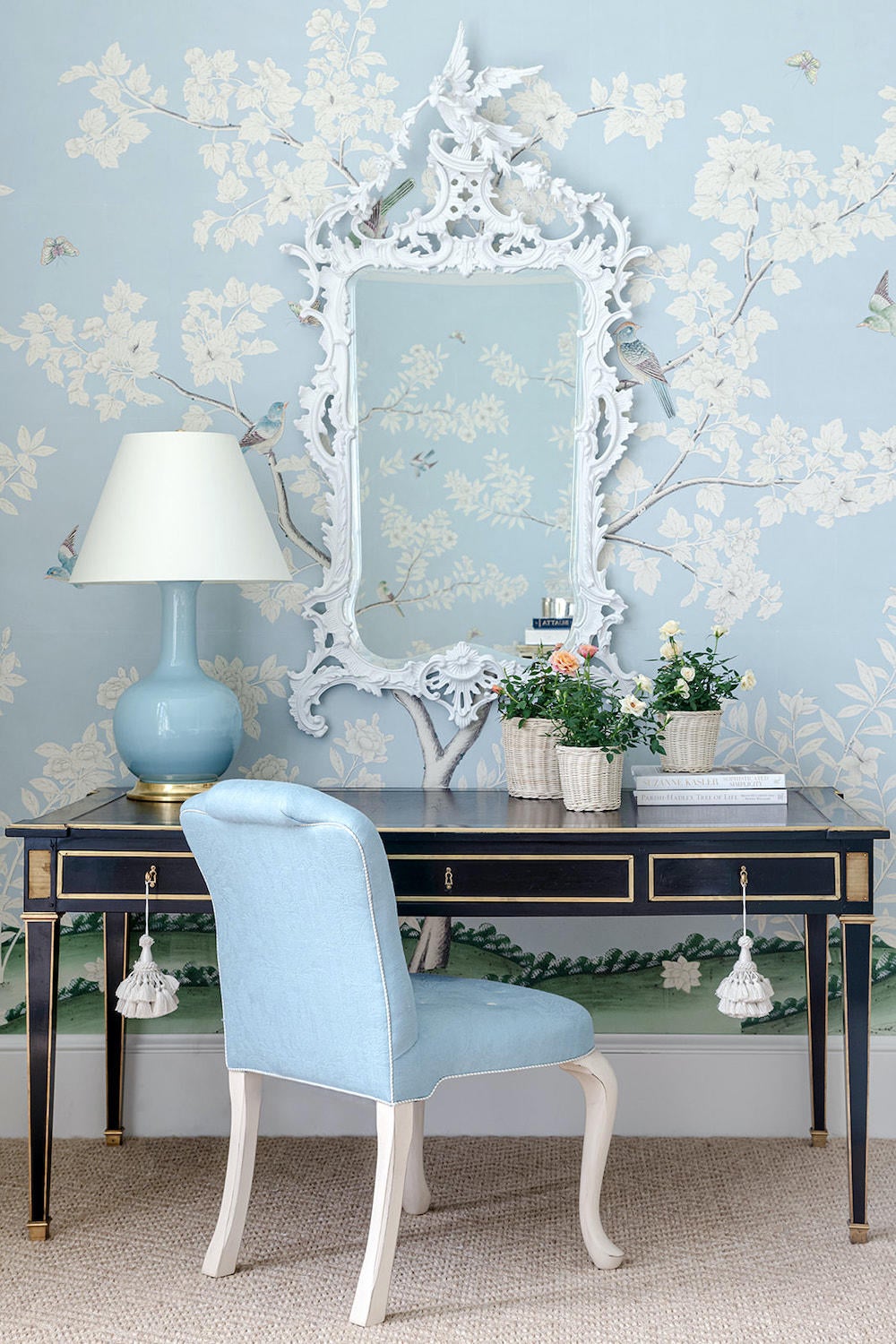
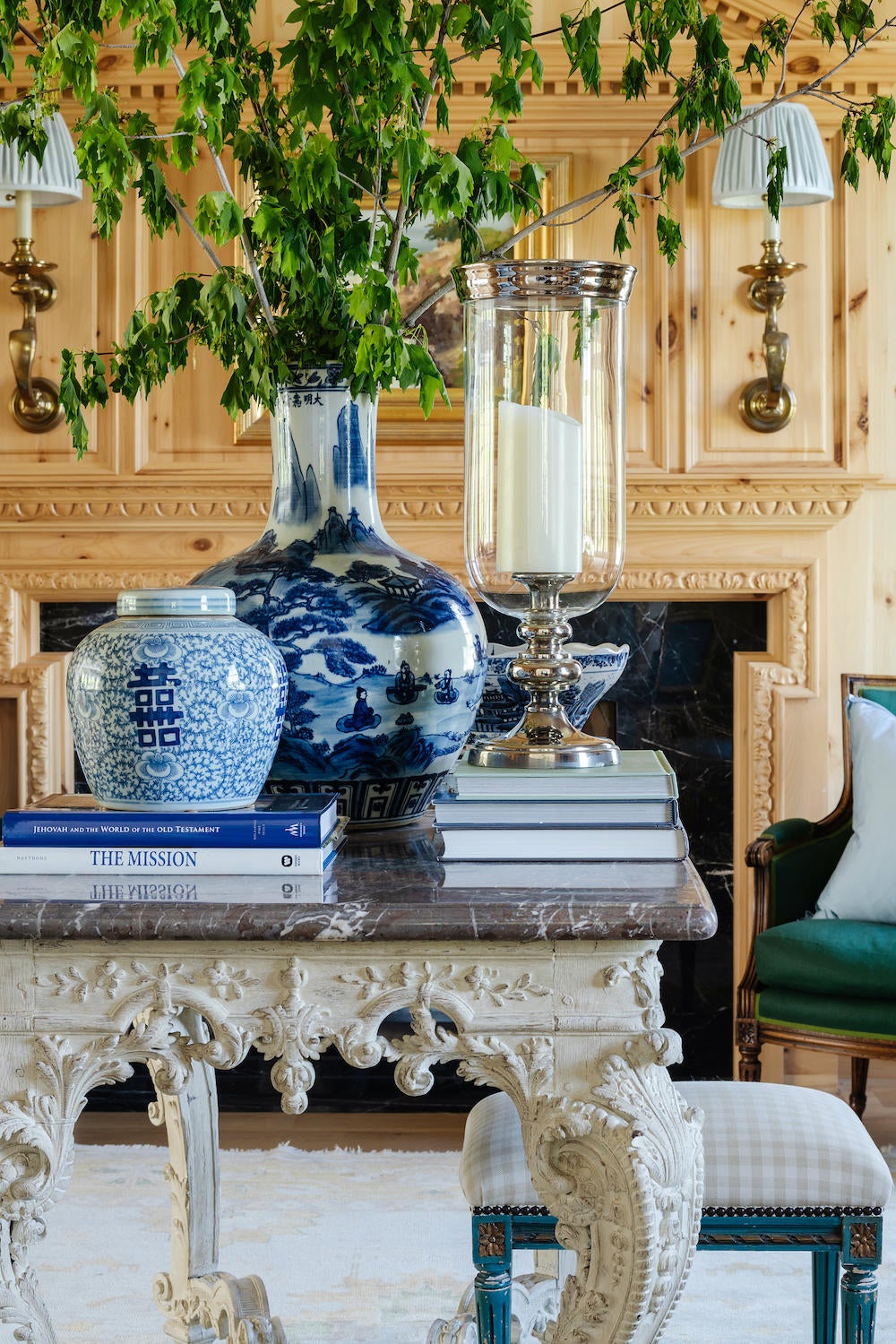
What does your team look like?
I have one gal that’s been with me eight or nine years—she’s a mom, so she works part-time. And then I have another girl that is in the studio with me every day. And then I have another two girls—one that comes in quite a bit and one that only works from home, and she really only does our CAD work.
How did you figure out what to hire for when you were first looking for a support team?
Well, first we just needed more hands—I needed somebody who really wanted to do the work and was willing to get their hands dirty. Work ethic and willingness are so important to me because that’s how I function. That seems like a low bar, but it’s not.
I love Pinterest and social media, but I think because of social media, we have this false sense of glamour that surrounds our industry. I am literally on my knees every other day, plugging and unplugging, fixing things, getting the right timers, I’m the one doing that. I know that there are a lot of designers who don’t do that, but I do. I come in and try to assess problems, and that requires—[not wearing] a cute outfit every day. There are days where I have my work boots and construction clothes on.
So that was what I was looking for first: extra hands. I found by working in the industry, hearing the talk, that it’s not extremely collegial, but I have found some incredible fellow designers who have helped me find some great people. That’s how I found these wonderful women that work for me.
Can you tell me a little bit just about Salt Lake City in general? The design scene, the housing market, the types of projects?
It’s growing like crazy. It’s always been growing, since I moved here 22 years ago, and there is a lot of new construction. A lot. And because we’ve had these boom periods prior to 2008, I think there will be a lot of remodeling support [coming up], as well.
Because the homes that were built then are dated?
Unfortunately, we just don’t have an architectural vernacular here. We have amazing developments here that popped up in the 1940s—those are the sweetest neighborhoods in Salt Lake, with incredible architecture. But then the ’60s has its own look, the ’80s had its own look, and really, you can drive through the valley and see it, decade by decade. The further south or north you get of the city, you see that.
That’s something that I’m always trying to figure out first when we start a new construction project with a client, or even when we’re remodeling. It’s like, “What time period do we want to bring the space back to?” We can incorporate all the new, fun gadgets and modern trends if the clients want to, but let’s start somewhere. So that means we pick a time period.
So you’ll imagine that the house was originally built in, say, 1923?
Right. Let’s have a baseline that we’re working from. Trying to find a time period, to me, is what helps ground the home—because even if your neighborhood is an ’80s build, I think it’s really great to take a space and reimagine it in a historical perspective.
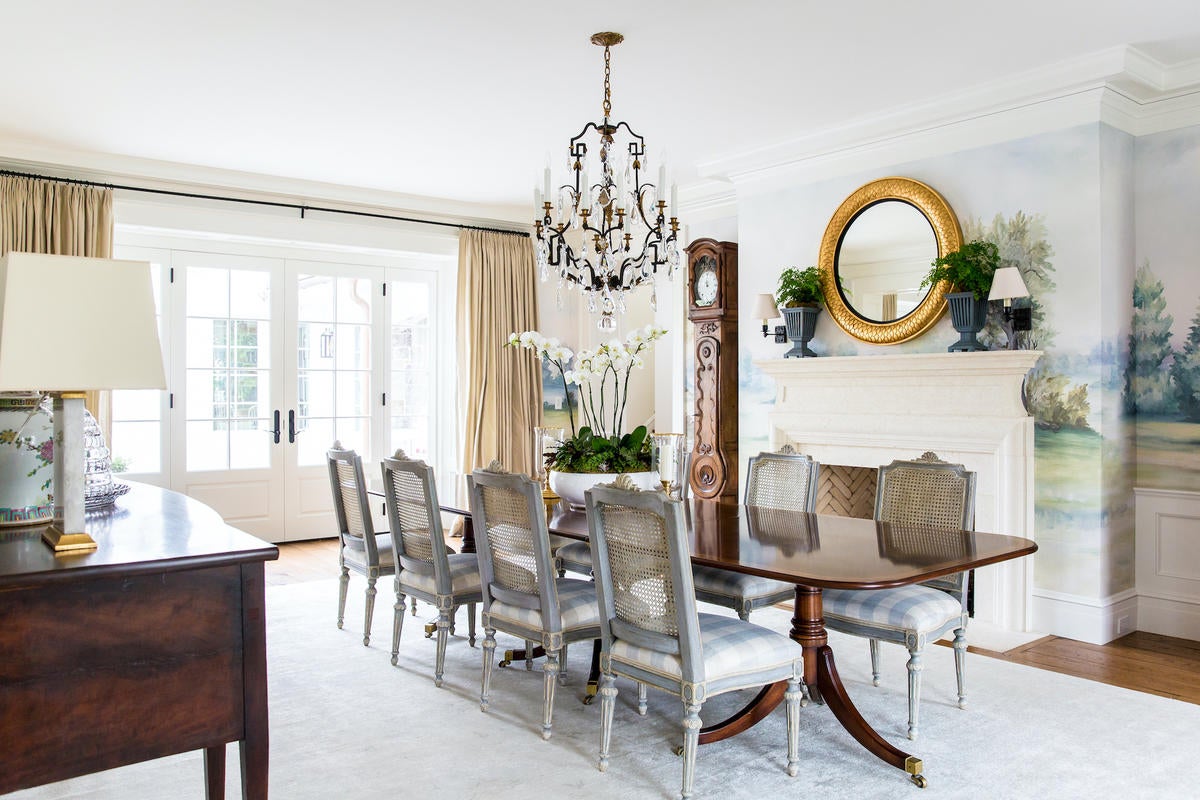
How far back are you looking? Are you thinking of those 1940s projects with really charming architecture, or are you pre-dating all of that?
One of the first big, long-term projects I worked on was built in a neighborhood on a street that leads right up to a canyon called Emigration Canyon, and when the Mormon pioneers came to Salt Lake in 1847, they came through that canyon and called it that because they were emigrating from Missouri. A lot of those people came from Ohio, Pennsylvania and New York, or they were immigrants from England, Scotland or Scandinavia—these people literally dragged their stuff across the plains and into Salt Lake City. So, for this project near the canyon, we had to tear down the house and we basically said, “What would it be like if these pioneers had been able to build a home when they got here? What would they have built? What would it have looked like if they could have dragged their homes with them?”
Wow—that’s such a beautiful way to think about it.
We chose an Empire, almost like a Greek Revival, 1830s to 1850s-style home. And then for the stone on the face of the house, we got it all from New York, Connecticut, North Dakota, Wyoming, Montana and Utah. It’s not like I do period rooms—I definitely don’t!—but we tried to have that timestamp.
How do you balance modern living inside that historic envelope?
You have to add layers. In Utah, we have these mountain views that are just unbelievable, and honestly, the best way to see a beautiful view is a big, modern, glassed-in back of the house—but if you’re a traditional designer like I am, I want mullions. So, I often let the back of the house be not quite as historic as the front. One of the homes that we worked on, we started with the centerpiece, and the idea was that that was where the original house was. Then, we said, “OK, this part was a remodel.” It was almost like creating a story for the house. It sounds a little cliché, but it really works, because you can say, “Well, this is when we added this little wing, and this was the barn. We connected the barn, and it’s now the great room.”
That’s a great story to have, and probably so great for the client to have been a part of, too.
I think it makes it fun, and I think it takes some of the seriousness out of it. I mean, it’s not a hard-and-fast thing—they could have gotten furniture [from an earlier time period] from Grandma, for all we know—but at least you have a story and a starting point, as opposed to, “Everyone is doing this modern farmhouse, and I want to have what she has.” Digging a little deeper and saying, “What did my great-grandmother have? What would she love?” Or, “What’s my heritage? What are some things that are important to me?”
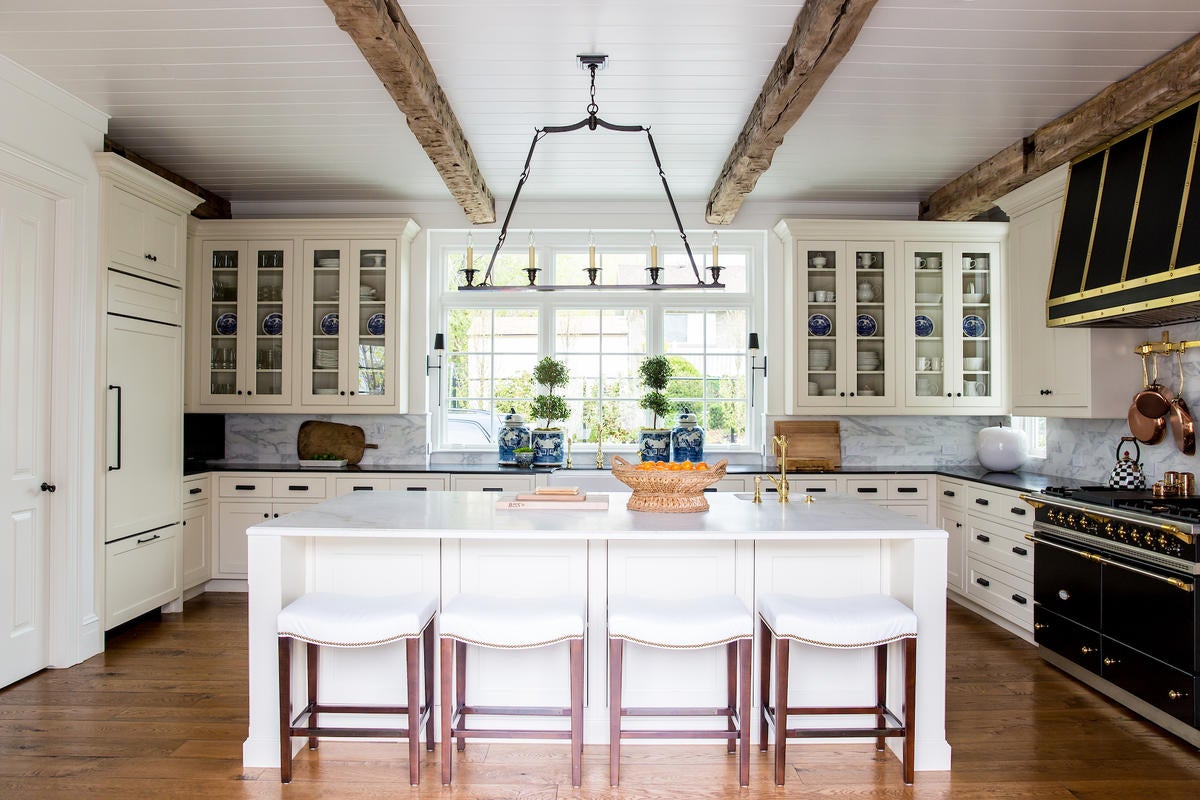
How many projects are you typically working on at a time?
We’re usually working [actively] on about six. My list is in the 20s, but I’m not working on every single one. A big project for me is soup to nuts—we’re working on your floor plans, and then we’re going to install furniture and maybe we’re even putting the flatware in your drawers.
Do you have a lot of projects like that?
I have had those, yes, and they’re really fun. But I also like coming in and just giving that instant gratification. If a client trusts you and they have a reasonable, moderate budget, it’s so fun to say, “I know how we can make this fresher.” Right now we have a remodel in Deer Valley that has, I think, quite a small budget, but we’re going to make a huge impact with paint—just getting the rust out.
Rust?
Rust is a favorite color for Utah. That orangey-brown—it’s everywhere. When I realized that we were going to live here—that my husband and I were going to stay and raise our family here—I started to really open my eyes to the design here. And I was like, What is this obsession with rubbing mud into every single color?
I’m always trying to put in clear colors. We have six months of the year that are very cold and we’re always inside, so light has become this optimal thing in my design. I’ve got to have a lot of natural light to get through the winters. So I’ve pushed against muddy tones like rust, orange and maroon. That said, a muddy tone in a ranch looks pretty bright, so you do have to adjust for where you are. All those great English homes are down with the muddy, but in a Utah winter, I just don’t think it’s what people need. What I’m bringing to the table is, How can we clean this up? Let’s clear out the cobwebs and get this space opened up and bright so you can stand tall and get your vitamin D.
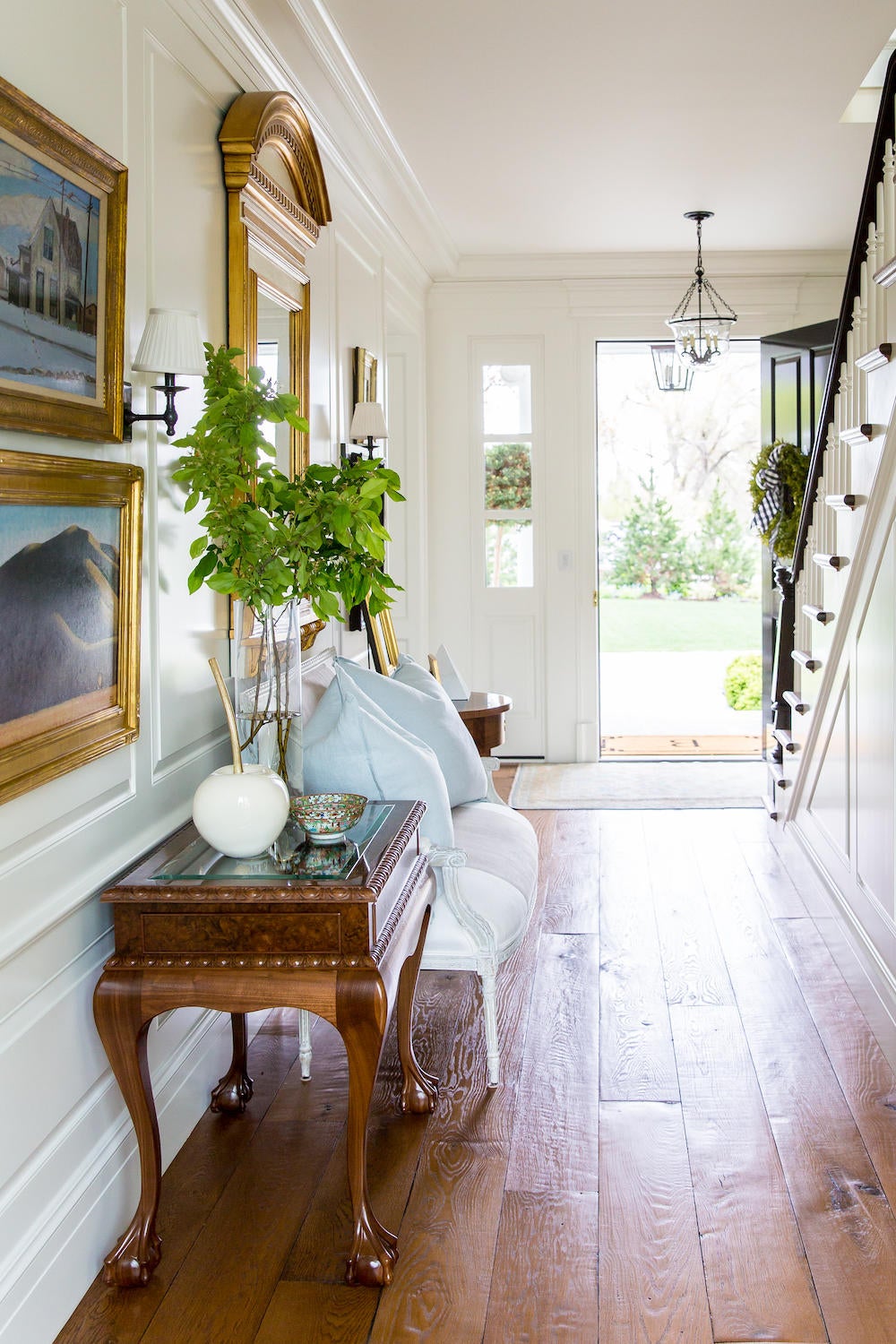
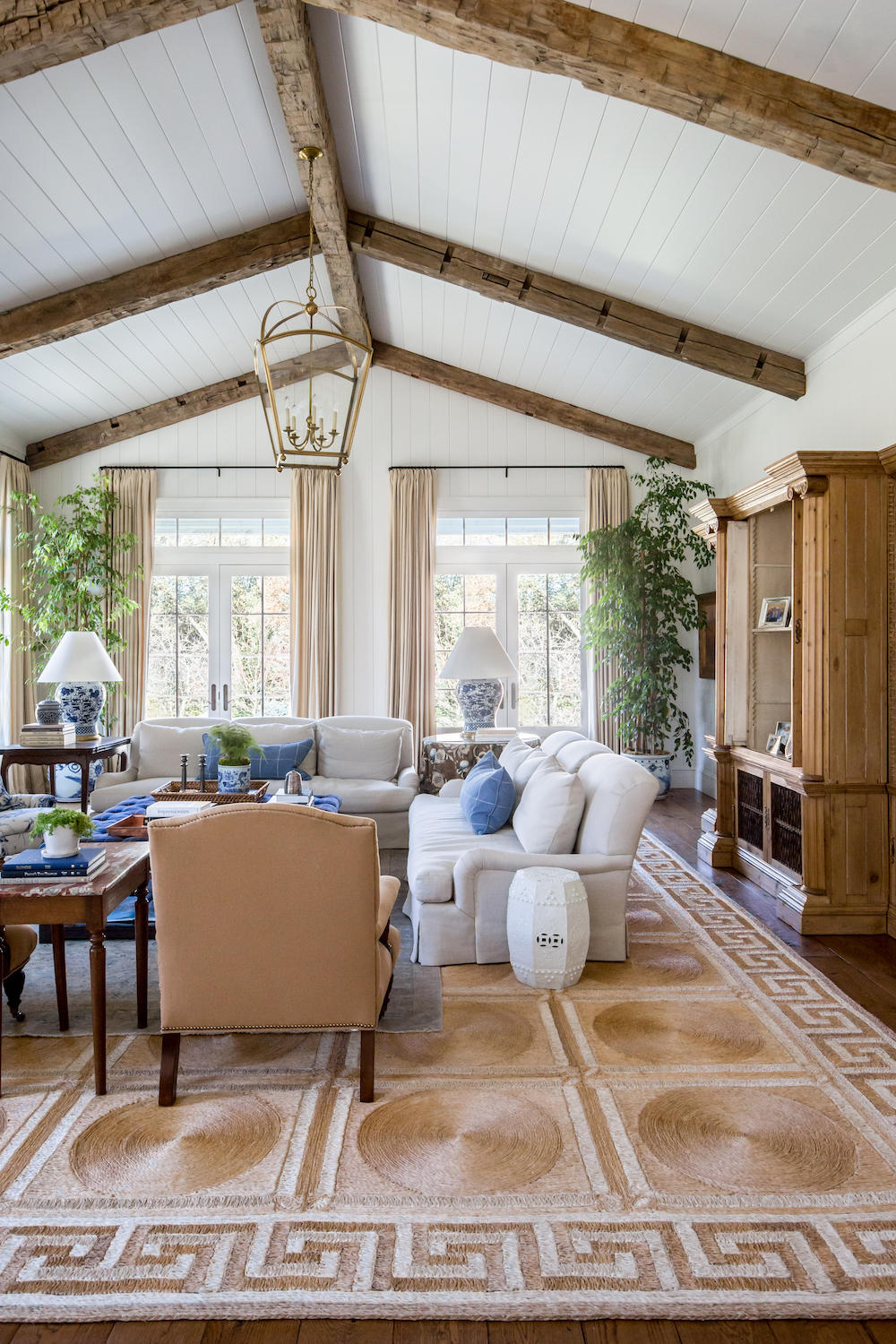
How do you decide what you say yes to? How do you know when a project is right for you and the firm?
We have a short interview. I ask pretty pointed questions, and the red flags are easy to see. I like working with people who are generally content with life, and who are working for something deeper or more meaningful in their space. I don’t love working for people who are constantly looking at what other people are doing.
I also take privacy very seriously. You have to keep in mind, we are essentially a very large town. So [my employees sign] a very long NDA that my lawyer charged me a whole lot to write out, and I tell the people that we engage with, “The things you tell us stay here.” That’s probably important anywhere, but it’s really important in a small town.
Can you tell me more about why that’s so important to you?
The work we do is so personal. It’s almost humbling when clients come in and say, “This is the problem we’re having. Can you help us?” Just coming to me with that problem, or letting me into their children’s rooms—it is a huge thing [for them]. Often, I’ll tell them, “If you’re uncomfortable answering any questions, you can ask me the same question back and I will give you the same. I have four crazy kids—I know how life is.” Or I’ll tell them, “I don’t expect you to have this perfect house. You may assume I have a perfect house—I do not. Reality, especially with remote learning, is a mess!”
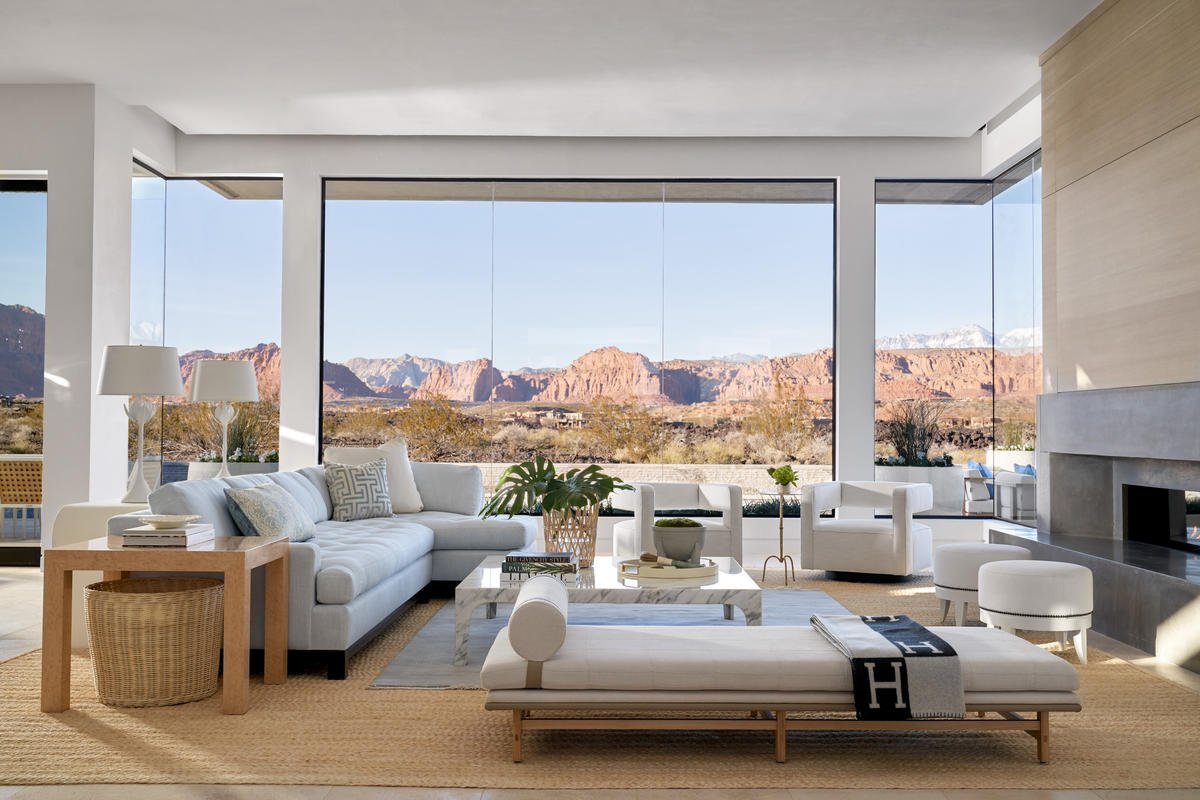
Tell me more about your timeline for projects.
I think patience is a virtue. And I think good things take time. I know some incredibly talented designers who can make things happen really quickly, and they’re amazing at what they do, but I don’t do that. I want you to have something you’re happy with [for a long time]—I don’t see why you should drag stuff down to the consignment store in 10 years. If your upholstery gets hammered, we can re-cover it, but I don’t think this throwaway culture is good for our world—and I don’t think it’s good for people, either. I’d rather have you [use your budget to] buy two things from Hillary Taylor than buy a bunch of stuff that we cobble together from big-box places.
Do clients respond to that? And how does that thinking shape your process?
I ask a lot of questions. I listen to what’s not working, and I like to look at their closets and see what [they gravitate toward], because sometimes they can’t tell me what they like. I assume they’re coming to me because they like blue, because I use blue a lot, but I never want to make that assumption!
I take a lot of notes, and then we try to make a floor plan. From there, we pick priorities. If it’s a new home, we work on all the floor plans at the same time that we’re putting in the plan so that I know that passage is going to allow us to have a nice sight line [and so on]. And then, from there we do presentations, essentially by the room. [We break it up like that because I find that] an hour and a half is about as long as people can handle talking about their stuff—you can feed them, you can put on a song and dance, but you lose them after about an hour and a half. We try to build a presentation that gives multiple choices, but has a consistency with what we’ve already talked about. At that point, they can take off in our software—we use Ivy, which allows them to approve every single item, line by line. But before they do that, it’s really helpful to talk through the whole proposal of each room, and why we made the choices we did.
How do you approach billing?
I work by the hour and bill for my time monthly; when we put budgets together, [they reflect] what we think something will cost in the end so that we can plan for my time. And then for any product the client has approved, we charge for 100 percent of the cost and we take that all upfront. I have a studio behind my house, so my overhead is so low that I don’t have to have big markups [to make the business work]. I mean, I do mark things up, but it’s all in the contract—I’m very open about it, and clients can look at any receipts if they want, so we save everything. But, I mean, I run it kind of tight.
Do you see that as a shortcoming or a strength of the business?
It’s a strength in that we don’t do more than we can handle, and we always pay our bills on time. I feel really strongly that all of our craftspeople need to be paid as soon as they send me an invoice. And I never worry about that piece of the business.
One of the things about charging by the hour that has been so blessed is that [it changes] what it takes for the client to call you on a Saturday night—or even in the middle of the day. They know that they’re being billed. There’s something about me not being owned that I am very proud of.

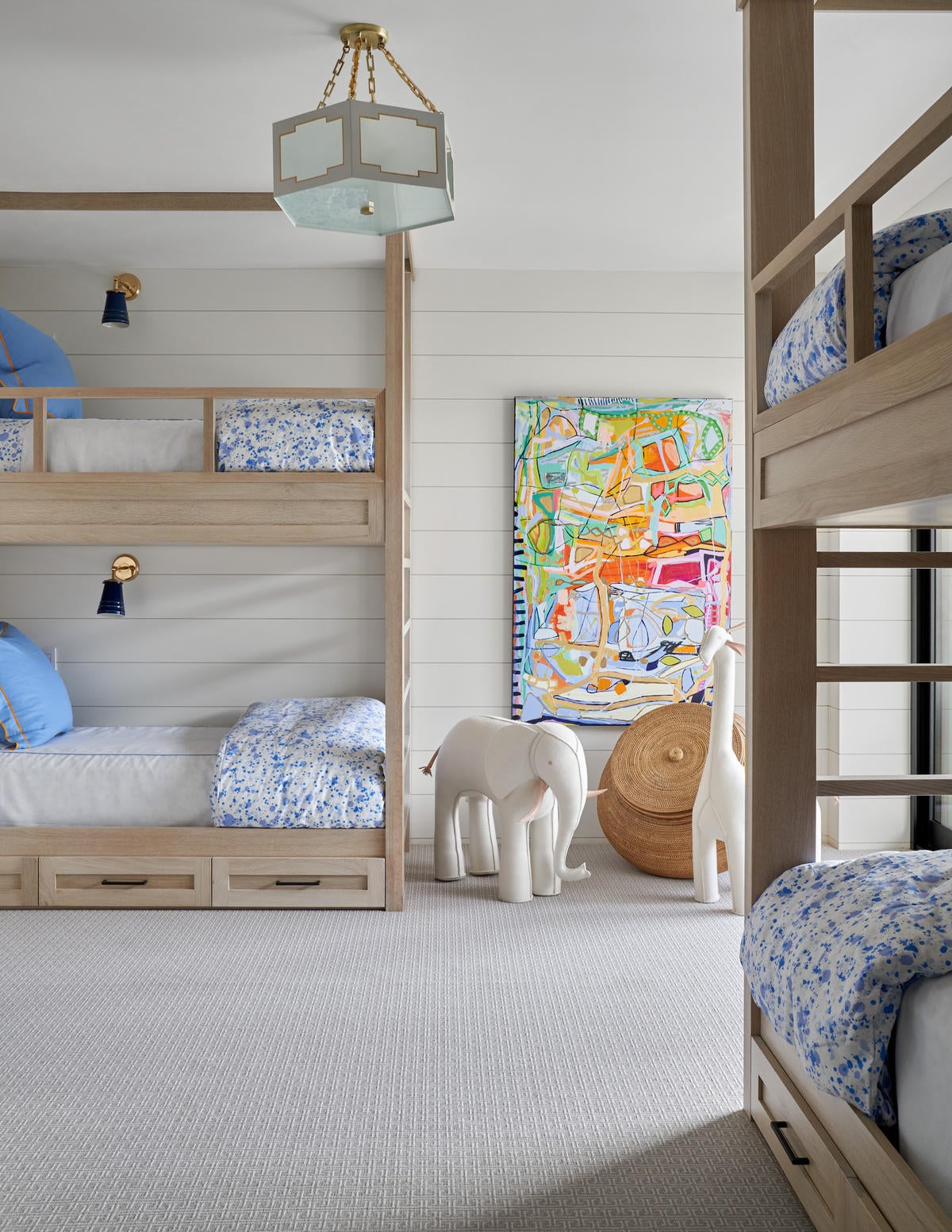
What has your approach to social media been? You have such a nice following there.
It’s been very organic—a little bit like our business. It’s not a huge priority, but I love that it can be a portfolio and a record of experiences and funny things that happen, or beautiful moments. That’s the joy of social media, seeing the talent out there, and seeing how many incredibly gifted interior designers there are. I love my design feed, and [it makes me] want to give back and share a little. Back to privacy, I have to be careful about what I’m sharing, though. It is in our contracts that we can photograph our work and share it, but these are people’s homes—some clients are super proud when you share their home and others are kind of quiet about it. There’s a very fine line.
Are there some projects you’ve done that you don’t put online because the client doesn’t want their house out there?
Yeah, and then there are some projects I never had photographed—which was an amateur mistake. You need to pay for the best photography you can afford, and you need to get your work photographed. You need before-and-after shots. I did this 40,000-square-foot house where the [original] house was melting—literally falling down a mountain—and I so wish I had before-and-afters.
Because that makes the after even more powerful?
Exactly. And I love those projects so much—I think it’s so fun to go into a space and give it some oomph, to strengthen the bones and make it architecturally sound. Sometimes the budget only allows for that and there’s no furnishings from us, and I’m cool with that because I want you to have the shell right. But still, I should photograph those things, and I haven’t always done it.
What does success look like for you as you’re looking ahead?
Success is having repeat clients—having people who love what we do calling us back for the next project. And in terms of growth, I think it’s important to have a showroom. I think that would be nice—but when you have homeschooling children, it doesn’t make a ton of sense.
It’s definitely a little harder in this moment.
I had actually gone under contract to buy a building on March 6, and I had until the 30th to do the due diligence. I backed out, but the dream is there. I would love to have a physical representation [of what we can do] other than my own personal spaces.
So you’ve been using your own home to showcase certain pieces?
I have—and I will tell you, it’s worked so well. You can walk people through certain rooms and have them sit in upholstery. That’s the most important thing—they want to see big-ticket items like a sofa or a rug. They want to touch and sit in a chair, so I’ve got that. But I think it would be really nice to have a showroom space—not necessarily a retail shop or anything, just a front of house [attached to the studio].
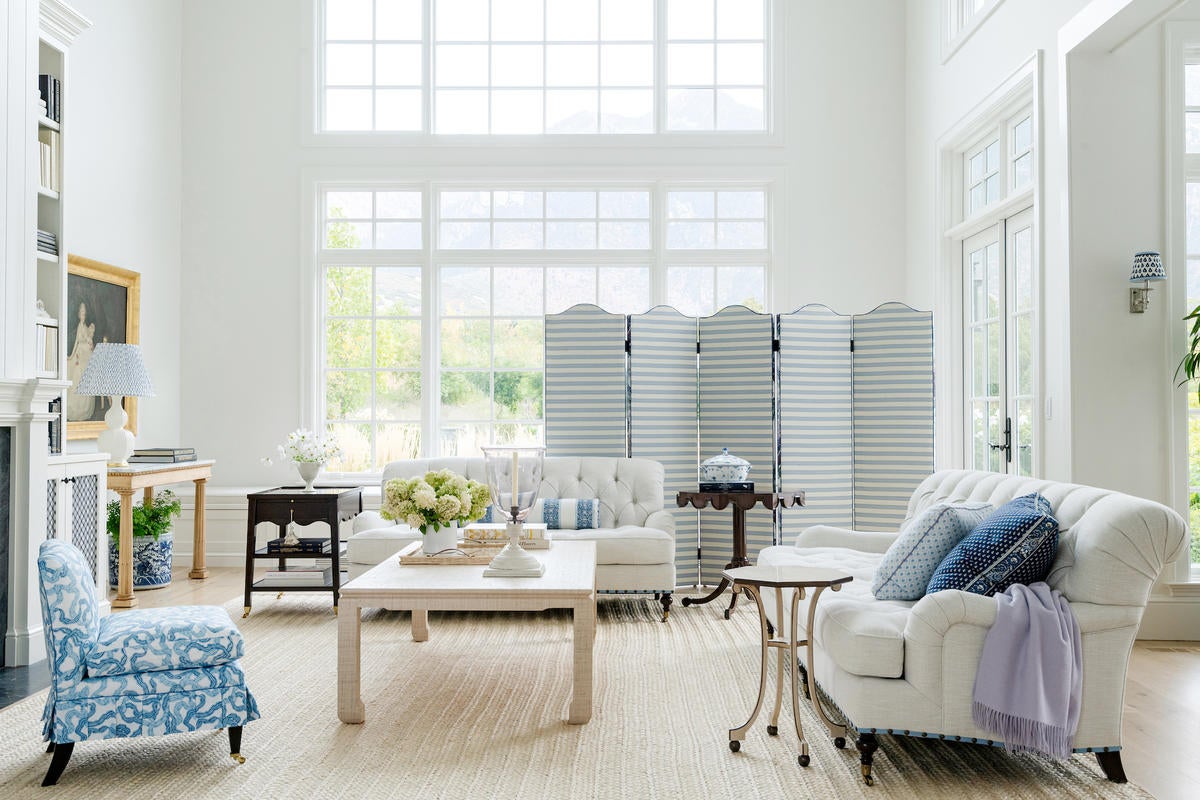
Where do you see the opportunity to grow?
The growth is going to be in remodeling and building. And, actually, I think it’s going to be more rural. A lot of people are buying ranches to get out of congested areas, so I think we might have to travel more within the state, too, and I think those will be great places.
St. George is a community in the south of Utah that essentially has the same climate as the Bay Area, plus 10 degrees in the summer—it gets a little hotter in the summer, but then it’s much more temperate, so it doesn’t snow like in northern Utah where I am. And that is such a neat community that’s growing really fast.
And in terms of my business, we spent the better part of 2020 developing a capsule collection of furnishings with The CEH, which is a lovely family-owned bespoke furniture business in Dallas, and it has been my largest point of growth this year. It’s five pieces, available to retail consumers and trade alike. I am proud of the concept that we could add to our revenue streams by bringing our work to the retail consumer—it has been a rewarding experience to develop pieces that anyone can purchase, whether they can hire us or not!
Where are you sourcing and shopping?
I’ll go to showrooms in the San Francisco Design Center because it feels like home—growing up, my prom was there! Hewn and Kneedler Fauchère, especially, have been so lovely to me. And then, locally, we now have a couple of showrooms—I love John Brooks, which is really out of Denver, but has a showroom here.
One of the challenges here is that we don’t have enough [skilled trades] in Utah. That is probably the biggest stress for my business in general—whether it’s a cabinet shop, a tile guy, or a seamstress, I’m worrying about how I am going to get it, and then how I am going to get it done by a deadline. It’s almost impossible. Because the labor shortage is so brutal, it’s a stress that is always with me. I’ve gone to workrooms in San Francisco, Los Angeles—I even use a workroom in New Jersey.
For local projects?
Yes, because I have to hit a deadline. I don’t mean to bag on Utah, because we have incredible craftspeople, but sometimes I have to hire outside. I’m often the guinea pig [for new vendors]. It’s like, “Can you guys make these curtains?” And then if they can get them to me on deadline and on budget, we can use them. You’ll just have to pay the shipping costs!
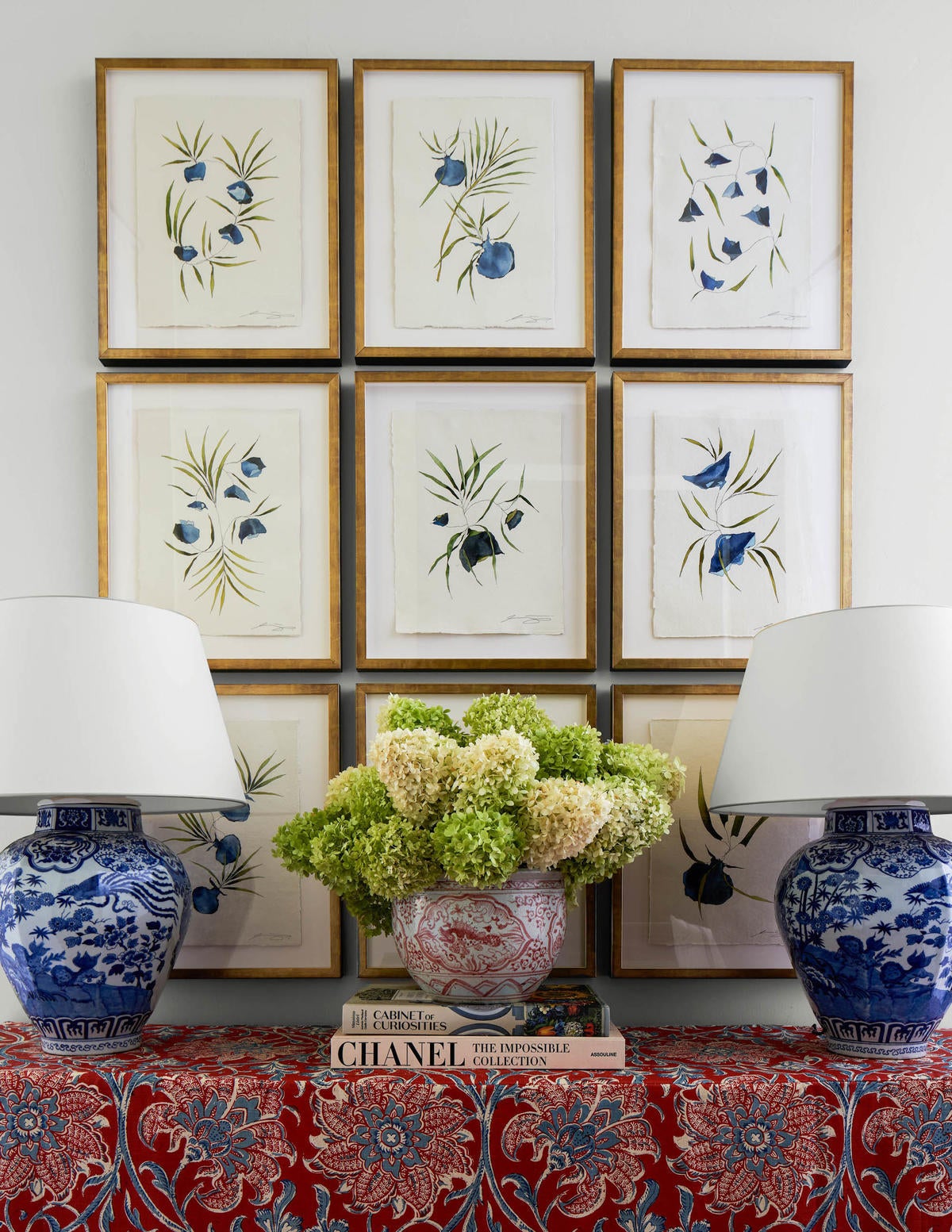
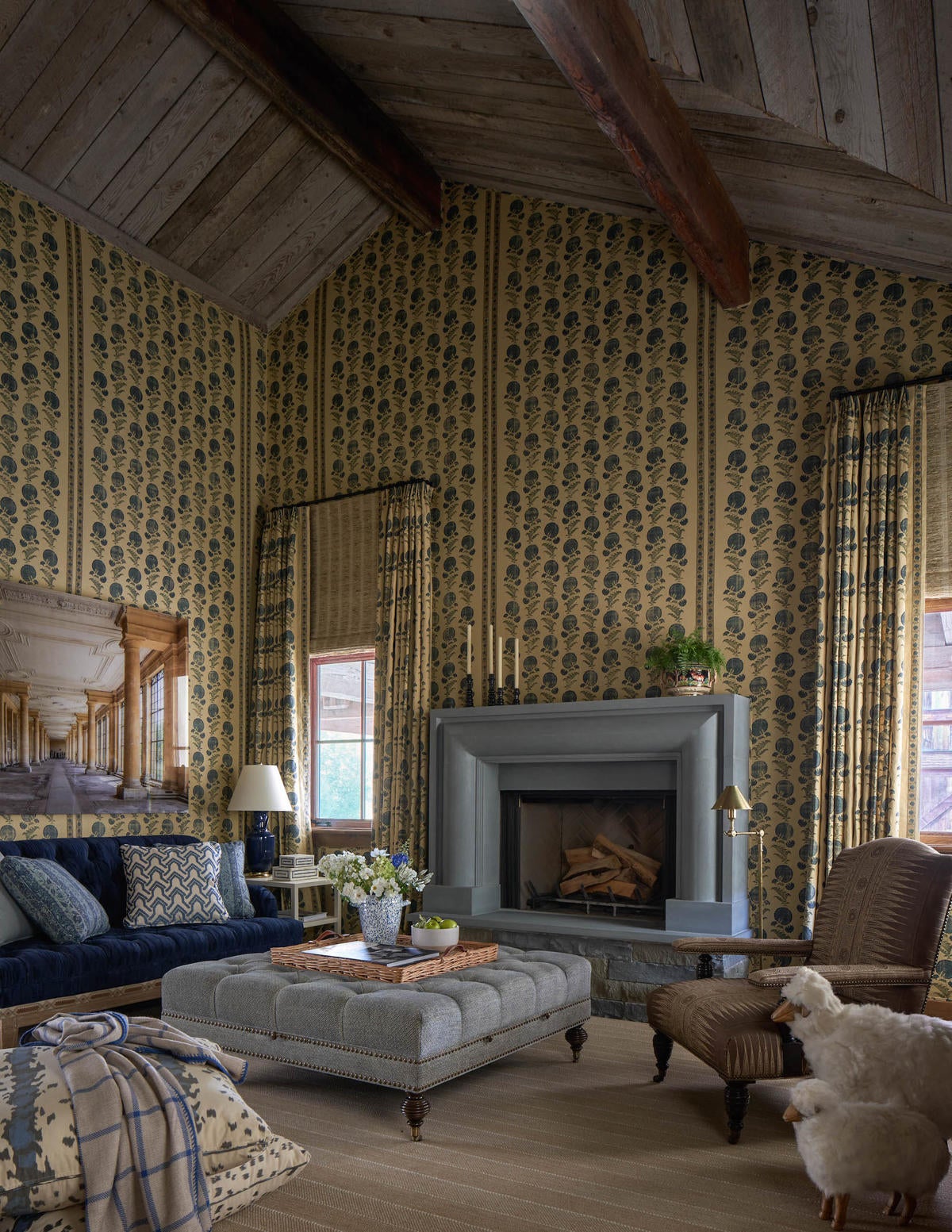
What keeps you inspired these days?
Books and people. It’s usually people and places that you have to just let go. I love going to Paris every year, and you can’t right now. But I do find that there are so many good old books, and I think they inspire and can be transporting, especially now, when we’re going into a period here in Utah, where it gets really cold and the green is gone. It’s going to be a lot of snow and we’re going to have a lot of brown days. We’ll have really blue skies throughout our winters, but I find that if you can’t travel and if we have some more lockdowns, books are going to be the best thing.
I have this great old book, Décoration, which was put together by a French decoration group in the 1960s—it’s huge, so I still haven’t even gotten all the way through it. It’s like the [French art magazine] Connaissance des Arts, but it’s an inch-and-a-half thick, and it literally goes through walls, floors, ceilings of buildings from the 17th century on. There’s so much in there that when I open that book up, there’s [always] something to learn, either visually or historically, and I think that’s really inspiring.
And then, of course, there are always new books. My favorites recently are the Deborah Needleman book, The Perfectly Imperfect Home, and [Marianne Cusato and Ben Pentreath’s] Get Your House Right. I give both of those to my clients.
That’s so interesting. What do you want them to get from the books?
Deborah Needleman’s book is saying, “Here’s how you put soul into your space.” Let’s find something from your home that you didn’t buy at Pottery Barn; let’s find something in your home that has some meaning and authenticity. When a home is imperfect, it says, “I chose it that way; I made it that way.” And with [Get Your House Right], there’s just something about English decorating and Anglo-American style that really lends itself to family life: Things are beat up, but they do look good. The idea of moving beyond perfection and digging a little deeper—it brings such a life to your environment.
To learn more about Hillary Taylor, visit her website or find her on Instagram.















